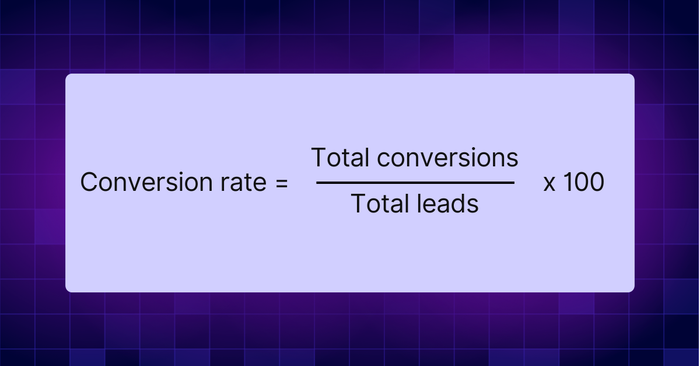Lead reporting involves collecting and analyzing data on potential customers who have shown interest in your business. It’s a powerful tool for small businesses, offering insights into which marketing channels drive the best results, how leads move through the sales funnel, and which leads are most likely to convert. With effective lead reporting, starting with your first report, you can make smarter marketing choices, boost conversion rates, and ultimately fuel business growth.
Effective lead reporting provides insights that can improve conversion rates, enhance marketing strategies, and fuel growth. A well-structured report can reveal key trends that small business owners might otherwise overlook. But what does effective lead reporting look like? And how can small business owners ensure their lead reporting is as effective as possible?
This guide will walk you through the essentials of lead reporting, including types of leads, how to monitor them, key metrics, and tools to streamline the process.
Why small business owners need lead reporting
It’s worth detailing why lead reporting is just as, if not more, important for small business owners as it is for larger companies.
In some ways, it’s obvious: once a small business owner has a viable product or service, it needs to attract customers and keep attracting them to foster growth. As a small business owner, lead reporting helps you see how effectively your teams find and win new business.
Your business can gain other insights from effective lead reporting too. It can help you understand the effectiveness of your marketing campaigns and channels, improve sales, and identify which leads are worth pursuing. Getting those things right from the start will save your business considerable time on research later on.
Lead reporting can additionally increase accountability and transparency, making it easier to set realistic goals and measure performance against targets; support data-driven decision-making, and help with forecasting and planning. Those are all important practices and habits to have in place as a business grows.
Additionally, if you as a small business owner understand the importance of lead reporting, you can set a powerful example for your management team.
Discover how Capsule CRM makes lead reporting for small businesses easy.
Types of leads and source
The first step in effective lead reporting is understanding the types of leads you’re dealing with and where they’re coming from. Each report should include information on lead sources to provide context for engagement strategies.
Leads can originate from various channels, and each source provides unique data points influencing how you should engage with them. Here’s a breakdown of common sources for leads:
Online channels
Digital channels are among the most common sources of leads for small businesses. They include:
- Website visitors: Individuals who find your business through organic search or direct links. You can capture these leads through forms, sign-ups, or chatbots.
- Social media: Facebook, Instagram, LinkedIn, and Twitter can be valuable lead-generation platforms. Leads may engage with your posts or advertisements, indicating interest in your product or service.
- Email marketing: Subscribers to your email list often express interest in receiving updates or promotions, making them prime targets for nurturing.
Referrals
Referrals come from customers, partners, or other stakeholders who recommend your business. This type of lead often has a high level of trust and is more likely to convert than cold leads, so understanding which referrals perform well can be vital.
Events and networking
Whether virtual or in-person, events are excellent sources of leads. Webinars, trade shows, and community gatherings allow for direct engagement, leading to highly qualified leads who show genuine interest. It’s important that your business research which events are most relevant early on.
Marketing campaigns
Knowing which campaigns drive the most qualified leads helps allocate your marketing budget more effectively. A detailed lead report of each campaign can help you identify where your resources are best spent.
Organic search and SEO
Organic search leads are generated when people find your business through search engines like Google, often due to high-ranking content or optimized web pages. These leads are typically highly relevant because they are from people actively researching information or solutions.
A solid SEO strategy, including keywords aligning with your business, creating valuable content, and optimizing for search intent, can increase visibility and attract quality leads. Tracking which keywords and content pieces drive the most traffic can further improve your lead reporting and refine your strategy for organic reach.
Paid advertising channels
Paid advertising through platforms like Google Ads, Facebook Ads, or LinkedIn Ads can rapidly increase lead volume, reaching audiences that might not find you organically. Since paid campaigns target specific demographics, interests, and behaviors, they can yield highly qualified leads if executed well.
To maximize returns, it’s crucial to track each ad campaign’s performance, monitor cost per lead, and assess conversion rates. This information can be used in your lead reports to determine which ads drive high-quality leads and provide insight into where to allocate future budgets.
Affiliate and partnership marketing
Affiliate and partnership marketing involves collaborating with other businesses or influencers to promote your products or services.
Leads from these channels often include a built-in level of trust due to the partner’s credibility. Tracking the lead quality and conversion rates from each affiliate or partner, allows you to identify the most beneficial relationships.
This information can also be included in lead reports to support decisions on which partnerships to expand or adjust.
Customer reviews and testimonials
Customer reviews and testimonials on platforms like Google, Yelp, or industry-specific review sites can also generate leads. Positive reviews build trust and influence potential leads who are researching your business. Tracking the number and quality of leads originating from review sites can provide valuable insights into your reputation's impact on lead generation. Including this in your lead reporting allows you to assess the influence of customer feedback and the effectiveness of maintaining a positive online presence.
Inbound content marketing
Blog posts, whitepapers, eBooks, and webinars are examples of inbound content marketing that draw leads by providing useful, informative content. These leads are often further down the sales funnel, as they’ve shown an interest in your expertise by engaging with in-depth content.
Tracking which content formats or topics attract the most qualified leads can help you adjust your content strategy to focus on high-performing topics and improve lead quality and engagement.
Key data points for effective lead reporting
Gathering comprehensive lead information is crucial for effective lead reporting. The data collected helps you understand who your leads are and how likely they are to convert, forming the foundation for a thorough lead report:
Contact information
Basic contact details, including name, email, and phone number, allow you to follow up with leads. It is, however, essential to go beyond these basics to better understand your potential customers.
Engagement levels
Monitor interactions like email opens, link clicks, social media activity, and website visits. High engagement can indicate a lead’s interest and can be used to prioritize follow-ups or tailor marketing efforts.
Customer preferences
Understanding a lead’s interests, preferences, and pain points can help personalize interactions. For example, if a lead has repeatedly visited product pages for a specific item, they may be further along in the decision-making process.
Lead source and touchpoints
Recording the source of each lead and the touchpoints they interacted with, helps you understand the customer journey. These insights allow you to determine which channels and touchpoints are most effective for your business.
These data points create a foundation for insightful lead reporting. This information can be gathered manually or automatically through a customer relationship management (CRM) system, making the tracking process more streamlined.
Tracking lead quality and conversion rates
Once leads start coming in, tracking lead quality and conversion rates becomes essential to evaluate the success of your lead generation efforts. A conversion-focused lead report can offer clear insights into the most effective channels.
Assessing lead quality
Lead quality refers to how likely a lead converts into a paying customer. Some ways to gauge lead quality include:
- Demographics: Are they in your target audience based on factors including age, location, or industry?
- Behavioral Indicators: Look for signals like frequent website visits, high email open rates, and repeated interactions with your brand
- Lead Scoring: Assign scores to leads based on their actions and demographic fit. Higher scores indicate a higher likelihood of conversion, helping you prioritize leads.
Tracking conversion rates
Conversion rates measure how many leads become paying customers. This metric is critical because it directly reflects the effectiveness of your lead generation and sales strategies. To calculate the conversion rate:

Tracking rates for different sources, campaigns, or customer segments can highlight the most effective strategies, enabling more effective resource allocation.
First interaction and attribution
Knowing the first interaction that brought a lead to your business—whether a social media post, ad click, or referral—can provide insight into the most effective channels. Understanding attribution helps you identify the entry points that drive the highest-quality leads.
Health metrics and behavioral insights
Lead health metrics and behavioral insights allow you to assess how likely a lead is to convert, giving you an advantage around follow-ups and resource allocation. By incorporating lead health metrics into your lead report, you gain valuable insights for prioritizing follow-ups and improving your sales process.
Lead health metrics
A lead’s “health” reflects their potential for conversion. Lead health metrics might include:
- Lead scoring: Based on engagement, demographics, and behavior.
- Engagement recency: Recent interactions often indicate higher interest.
- Time spent on website: Leads who spend more time exploring your website are often further down the sales funnel.
Behavioral patterns
Analyzing behavioral patterns will help you understand how leads move through your sales funnel. Behavioral insights might reveal common paths or sticking points in your funnel, such as a high drop-off rate after visiting a specific page. Understanding these patterns allows you to improve the customer journey for better results.
Reporting and analysis
Effective lead reporting goes beyond gathering data; it involves analyzing insights and acting on them to improve marketing and sales strategies.
Creating lead reports
Each lead report your business produces should be tailored to its business goals. Careful reviews of every lead report will give you actionable insights to improve performance. Consider including sections on:
- Lead sources: A breakdown of where leads are coming from
- Conversion rates: Conversion rates per source and overall
- Engagement levels: Engagement scores or activity summaries for each lead
- Health metrics: Indicators that show which leads are most likely to convert.
Interpreting data
In your reports, look for trends and anomalies. For example, a sudden increase in social media leads indicates a successful campaign, while low conversion rates from a particular source might suggest low-quality leads.
Adjusting strategies based on insights
The insights gained from lead reports should be used to adjust marketing strategies. For instance, if email marketing generates high-quality leads but social media conversion rates are low, you might focus more on email.
Privacy and data handling
Handling lead data responsibly is crucial. Ensure that any information you collect complies with privacy regulations like GDPR. Provide transparency about how customer data is used and stored, and always include opt-in options for communications.
Tools and resources for lead management
Several tools can help streamline lead tracking, management, and reporting. Here are some options:
CRM software
Customer Relationship Management (CRM) platforms like Capsule CRM help automate lead tracking, scoring, and reporting. These platforms offer analytics dashboards that make it easy to generate reports and analyze lead data.
Analytics platforms
Google Analytics, for example, offers insights into lead behavior on your website, including traffic sources and user journeys. You can integrate these analytics with your CRM for a comprehensive view.
Reporting templates
Standardized templates for each lead report can simplify the process and ensure consistency across every lead report. Many CRM systems offer customizable reporting templates, or you can create your own with tools like Excel or Google Sheets. Some will additionally offer integrations that allow you to export reports into those formats.
Other resources
Lead generation and reporting platforms like Leadfeeder and CallRail provide specialized tools for tracking and scoring leads based on specific actions or touchpoints. You can use these to enhance lead data and gain deeper insights. This, in turn, translates into more insightful reports that your business can use to make more impactful decisions.
Practical advice for small business owners
For small business owners, lead reporting is more than a routine task—it’s a powerful tool for growth. By understanding the sources for each lead, undertaking comprehensive data collection, tracking conversion metrics, and analyzing lead health, you can refine your sales and marketing efforts to achieve higher conversion rates and, ultimately, greater business success.
Start small: focus on gathering and organizing basic lead information, then gradually expand your analysis as you become more familiar with your data. Use CRM tools and analytics platforms to streamline the process, and always prioritize transparency and data privacy.
Remember, effective lead reporting is about more than tracking—it’s about making informed decisions that drive growth. With the right strategies in place, you can turn lead reporting into a competitive advantage that empowers your business to thrive.
Set clear goals and benchmarks
To get full use out of lead reporting, start by setting clear goals and benchmarks that align with your business objectives. For example, if your goal is to increase conversions from social media leads, establish a target conversion rate and regularly review advances in your lead reports.
Having these benchmarks helps you measure success and understand which strategies are working. Regularly comparing your lead metrics against these benchmarks can highlight areas of improvement and identify growth opportunities, ensuring that every lead report provides actionable insights.
Prioritize lead quality over quantity
While it may be tempting to focus on generating as many leads as possible, prioritizing lead quality can yield better results in the long run. Higher-quality leads are more likely to convert, leading to more efficient use of your marketing allocations.
Focus on tracking indicators of lead quality—such as engagement level, demographic alignment, and lead source—within your reporting. By identifying which channels consistently produce high-quality leads, you can allocate more budget and staff toward strategies that deliver better results, improving your approach over time.
Privacy matters
When capturing the data for your business’s lead reporting, it’s also important that you respect all the relevant privacy laws and regulations in the jurisdictions in which it operates. That should also include having a privacy notice clearly explaining to prospective leads and customers how their personal data will be collected, used, and protected. This will contribute to providing transparency and building trust.
Ready to take control of your lead reporting?
Tracking and managing your leads is essential to growing your business, but it doesn’t have to be complicated. With Capsule CRM, you can easily capture, monitor, and nurture your leads—all in one intuitive platform designed for small business success.
Capsule CRM provides powerful tools for managing lead data, reporting on conversions, and making informed decisions, so you can focus on what matters most: building lasting customer relationships.
Sign up for a free trial of Capsule CRM today and see how effortless lead reporting can be!
Common questions about lead reporting
Lead reporting is the process of gathering, analyzing, and interpreting data related to potential customers (leads) who show interest in your business. Lead reporting for small businesses is essential because it helps you understand which marketing channels are effective, how leads progress through the sales funnel, and which leads are most likely to convert. This insight enables better marketing decisions, higher conversion rates, and ultimately, more growth.
Effective lead reporting requires collecting basic contact details (like name, email, and phone number), engagement metrics (such as email opens and website visits), customer preferences, source, and other interactions. Together, these data points provide a clear picture of each lead’s behavior and interest level, helping you better prioritize and personalize your approach.
Lead quality can be assessed by using criteria like demographic fit, engagement level, and specific behaviors, such as visiting key pages on your website or responding to emails. Many businesses use lead scoring, which assigns a score to each lead based on their potential for conversion, allowing your sales team to focus on the most promising opportunities.
Conversion rates represent the percentage of leads who take a desired action, such as making a purchase or booking a consultation. You can calculate conversion rates for different channels (like social media or referrals) to see where the best leads come from.
Most CRM systems, such as Capsule CRM, allow you to set up conversion tracking and reporting for better insight into your sales performance.
Lead reporting provides data-driven insights into which channels and campaigns produce the most valuable leads. Analyzing conversion rates, sources, and engagement metrics, means you can identify successful tactics and allocate resources more effectively. It also helps you spot patterns in customer behavior, which can guide you in tailoring your messaging and approach to meet customer needs.
Yes, there are several tools available to help small businesses streamline lead reporting. Customer Relationship Management (CRM) platforms, such as Capsule CRM, automate lead tracking, scoring, and reporting, giving you a central place to manage all the lead data collected. Additional tools like Google Analytics can help you understand website traffic. Reporting templates, meanwhile, simplify data presentation.
To comply with data privacy laws, like GDPR, always collect only the necessary information from leads and ensure they’re informed about how their data will be used.
Provide an opt-in option for marketing communications, and be transparent about data handling practices. Capsule CRM, for example, offers built-in tools for managing customer data responsibly.
If you’re new to lead reporting, start by tracking basic information, like sources and engagement level. Over time, expand to include more detailed data points, such as lead scoring and conversion rates.
A CRM system can simplify this process by automating data collection and analysis, helping you gain insights more quickly. Capsule CRM’s free trial is a great way to explore its lead reporting features and see how it can work for your business.




